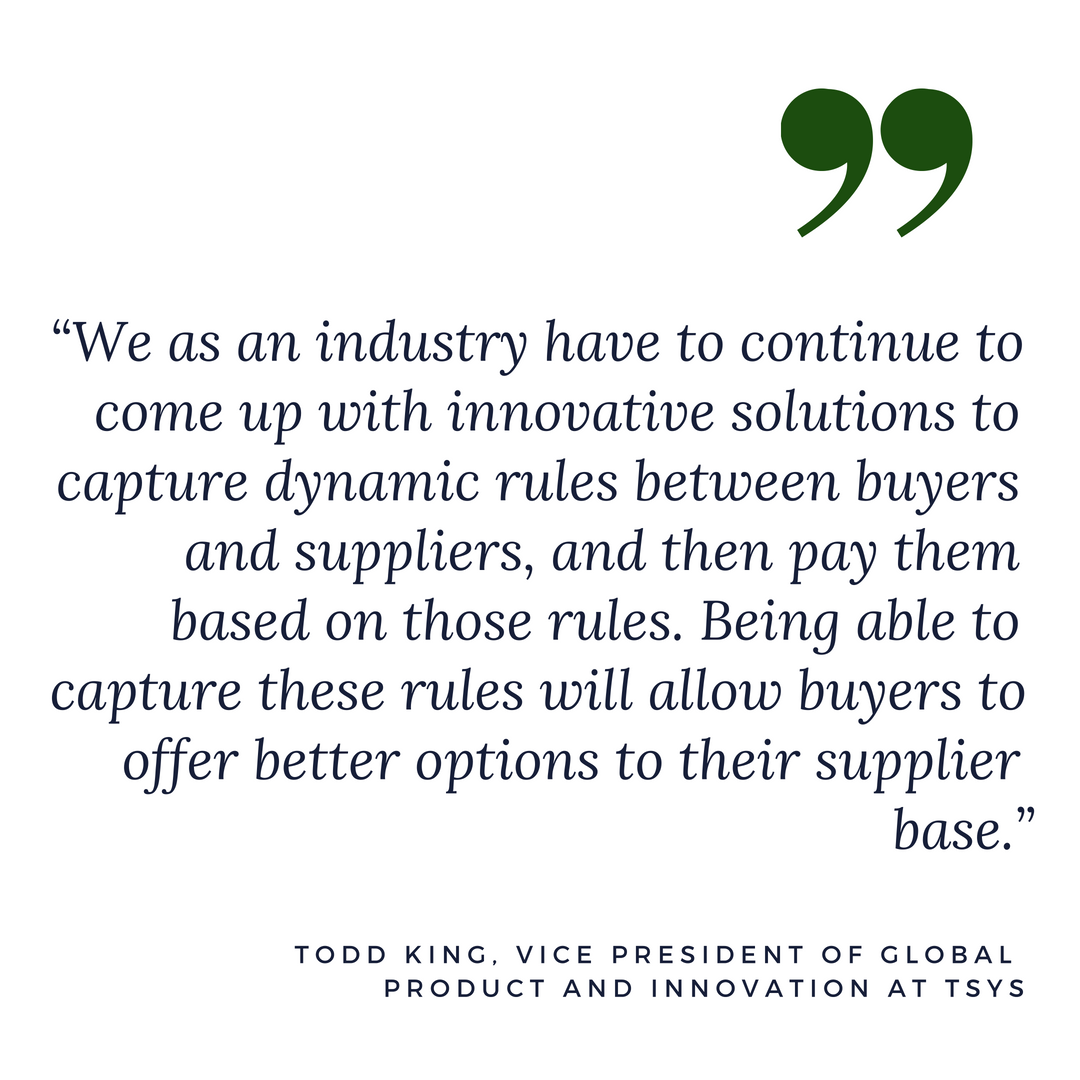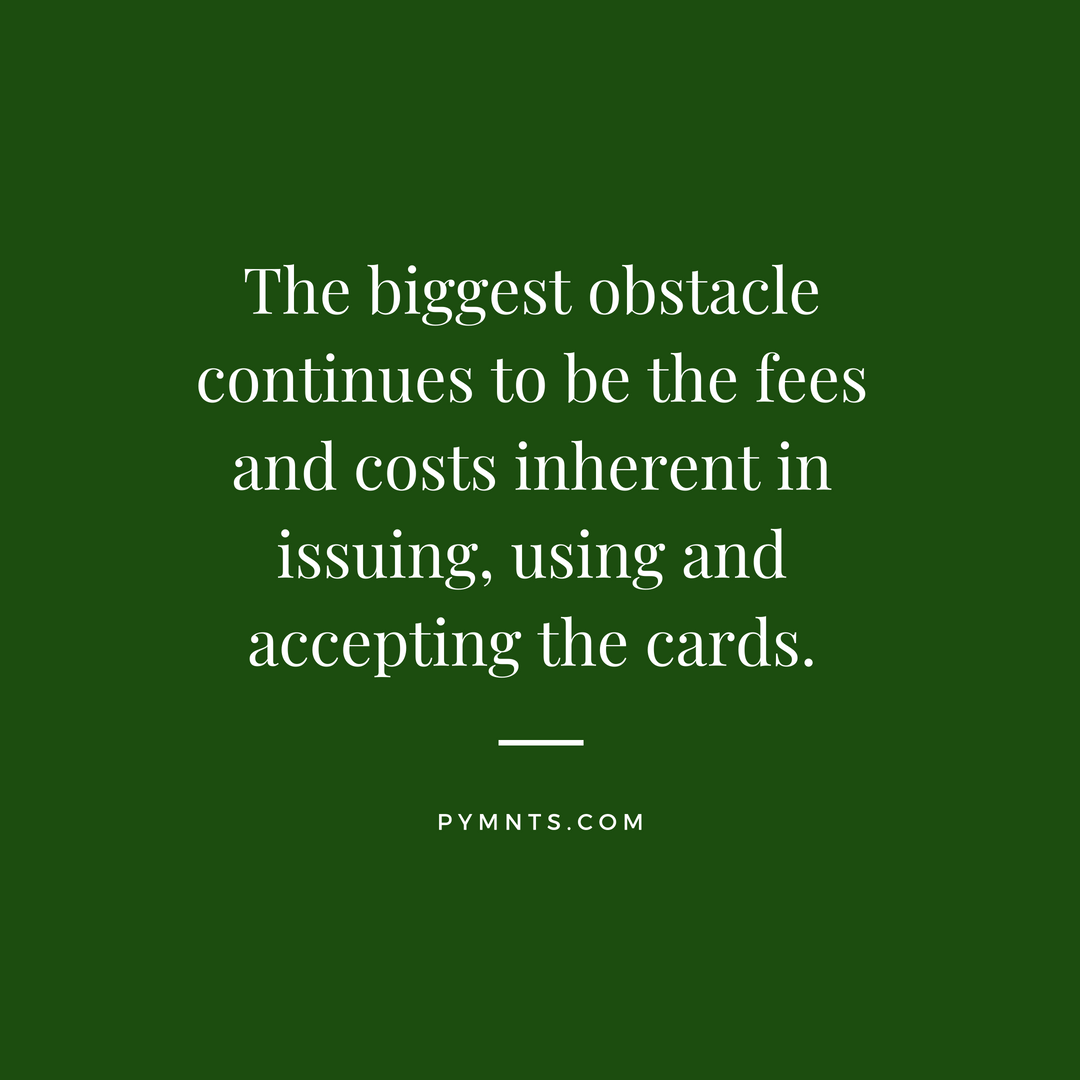
In an effort to kill the check — where B2B payments are anything but efficient — might virtual cards be the answer?
In an interview with PYMNTS’ Karen Webster, Scot Yarbrough, senior vice president of commercial services, and Todd King, vice president of global product and innovation, both at TSYS, said the embrace of electronic payments may have been slow to get beyond a standing start, but momentum is building.
Consider the fact that, among headlines generated in recent months surrounding virtual card adoption, TSYS — which provides solutions for issuers, merchants and consumers — said in February that JPMorgan will offer its Virtual Payment PreceptSM, a virtual card platform that integrates with ePayable solutions.
As ePayables have emerged as an option in the commercial realm, Yarbrough noted that a virtual card can solve problems for both buyers and suppliers.
Everybody wants security as they transact — and security is paramount when sensitive card or account-related data that makes its way between buyers and suppliers, as Yarbrough noted, “is jotted down on a sticky note or stuck in a drawer.” Virtual cards can be set for single use and for exact invoice amounts, thus mitigating the risk.
Beyond the security aspect, other advantages accrue for buyers and suppliers who utilize virtual cards — and, as Webster noted, unplanned spend (which can be a significant percentage of operating costs) can be covered with relative ease.
In terms of mechanics, a single-use account means that each supplier payment is tied to a virtual account number, and the credit limit is set to the amount that is dictated by each payment. When combined with innovative authorization parameters, each invoice can be controlled and reconciled in a much more efficient and safe manner, bringing a great deal of value to buyers and suppliers.
The Friction Points Hindering Adoption
 But a number of friction points remain, King added: “As an industry, we failed early on to show the benefits of virtual cards to suppliers, but that is changing, and the industry is beginning to do a better job.”
But a number of friction points remain, King added: “As an industry, we failed early on to show the benefits of virtual cards to suppliers, but that is changing, and the industry is beginning to do a better job.”
The biggest obstacle continues to be the fees and costs inherent in issuing, using and accepting the cards. As an example documented in this space just last month, interchange fees levied on those transactions could make would-be corporate users – and specifically, their suppliers –hesitant to accept virtual cards. However, when benefits of virtual cards are shared with the supplier, and the supplier takes the time to understand their true costs of accepting other payment types, they begin to better understand that virtual cards are competitive and can solve many of their problems.
In addition, said King, TSYS has seen success in converting wire-based and check payments to virtual cards. But, he conceded, “sometimes it’s those larger payments that the industry struggles to get on virtual cards.” But the card associations, he said, continue to “tweak” interchange rates as suppliers get better at capturing level 3 data, which leads to lower fees and helps to streamline the reconciliation processes. And, King added, there continues to be new programs, emerging innovative payment networks or products that help make the economics work better for suppliers. An example of these would be adding closed-loop network solutions and buyer-initiated payment principles — or a coupling of them — to the mix.
Said King: “We as an industry have to continue to come up with innovative solutions to capture dynamic rules between buyers and suppliers, and then pay them based on those rules. Being able to capture these rules will allow buyers to offer better options to their supplier base.”
The flexibility in embracing those rules and in capturing payment terms, said King and Yarbrough, lends attractiveness to virtual cards, as it allows buyers and suppliers to cement their relationships and maximize cash flow efficiencies. That can make using cash as corporate strategy easier with corporate cards, said the pair.
In commercial payments, the buyer wants to stretch payables outstanding a bit before parting with cash – while the supplier, of course, wants to get paid as quickly as possible, and may be willing to extend a discount in return for speedier payment (shortening, too, the amount of time a receivable is on the books). With the virtual card, King said, “you can achieve both by paying the supplier quicker, leveraging your commercial line of credit and extending those payables. It is finding that mix of providing value to both stakeholders that is key.”
The Supplier Onboarding Conundrum
 Webster noted that getting suppliers onboard — and anyone new — can be tricky. After all, adopting new payment methods mandates new tech integrations and a commitment to new ways of doing business.
Webster noted that getting suppliers onboard — and anyone new — can be tricky. After all, adopting new payment methods mandates new tech integrations and a commitment to new ways of doing business.
“It is an obstacle,” said King, “and that is where we as an industry have historically not focused, as up to now we have primarily focused on solving problems on the buyer’s side. I think we are beginning to see the trend and focus shift more on the supplier side to focus on their problems, which in turn will help drive better acceptance rates.”
Said Yarbrough, “One of the obstacles we do need to worry about as an industry is inundating some of these large suppliers with so many remittance advices that contain virtual cards, which we refer to as ‘portal fatigue.’ Again, this is where, as an industry, we need to continue to innovate and push solutions like buyer-initiated payments, where the funds can be pushed directly to the supplier’s account without them having to see, touch or key any virtual card data into their POS terminal.”
Yarbrough stated that virtual cards remain an area of strategic importance going forward for TSYS, in North America and internationally. “We feel that our virtual card product, VPP, is a key component of our commercial servicing ecosystem, and we will continue to invest heavily in the product and work to develop key strategic partnerships to embed our technology.”
King added, “We talked primarily about how virtual cards are important to accounts payable use cases, but we are spending lots of time focusing on T&E use cases across our product suite. There are many important ways virtual cards can be used, and we want to ensure our solution will support them all.”